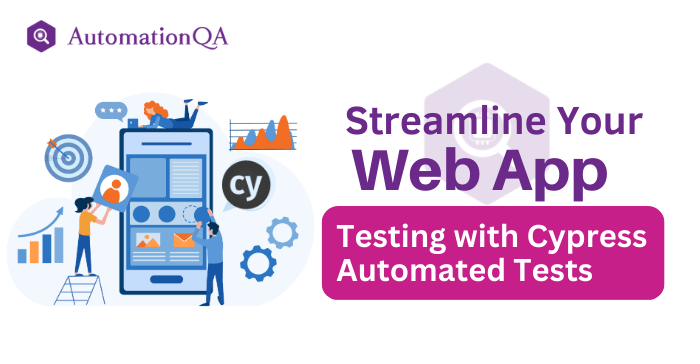
Are you a web developer or tester looking for a more efficient way to validate your web applications? Are you tired of countless hours manually testing your web app for bugs and errors? If so, you’re in luck because Cypress is here to revolutionize how you test your applications.
Cypress is an open-source testing framework that allows developers and testers to write automated tests for their web applications. With Cypress test automation, you can create end-to-end tests, integration tests, and unit tests that can help you catch bugs and errors before they cause problems for your users. By automating your testing process, you can save time, reduce the risk of human error, and ensure that your web apps are always performing at their best. Are you ready to take your testing to the next level with Cypress? Let’s get started!
Why Choose Cypress for Automated Testing?
Cypress’s powerful built-in test runner lets you see the test results in real time. It provides detailed reports on the tests, including screenshots and videos, making identifying and fixing errors easy. Integrate Cypress automation tool with popular CI/CD tools such as Jenkins, Travis CI, and CircleCI, seamlessly automating your testing process and incorporating it into your development workflow.
Features of Cypress Test Automation
Time Travel
Cypress allows time travel, allowing you to see how your application behaves at any point during a test. It takes snapshots of the event when you run the test.
Debuggability
It has a built-in debugger that allows you to inspect the reasons for the failure of the tests. It provides readable errors and stack traces to make the process seamless.
Automatic Waiting
Automatic Waiting ensures that your tests run correctly by automatically waiting for the elements on the web applications page to be available before timing out and failing the test.
Spies, Stubs, and Clocks
Spies track code; Stubs replace functions with fake versions; Clocks control timing features like countdown timers or expiration dates.
Network Traffic Control
This feature allows a tester to intercept and modify network requests, simulate different network conditions, and test how your application responds to different network scenarios.
Consistent Results
One of the advantages of using Cypress tests platform is this feature, which ensures that you always run the test in the same manner, irrespective of the testing environment, for consistent results.
Screenshots and Videos
The platform allows the tester to take screenshots of the entire page or a specific element. This feature comes in handy during the documentation or debugging process. With video help, the tester can record the whole test to review the results.
Real-Time Reloads
Real-Time Reloads is an exclusive feature that allows the tester to monitor the test and application code changes in real-time without reloading the browser. This overall makes the cypress testing automation process more effective and efficient by reducing the interruption in the workflow.
How to write your first test in cypress test automation?
Writing your first test in Cypress is quite easy. Here are the steps to get you started:
Step 1: Install Cypress
The first step is to install Cypress on your machine. You can do this by going to the Cypress website and downloading the appropriate installer for your operating system. Once downloaded, run the installer and follow the instructions to complete the installation.
Step 2: Create a Test File
Create a new file in your project directory and name it “test.spec.js”. This file will contain your test code. You can name it whatever you like, but following the cypress test automation naming convention is essential to ensure that the test runner can find your Cypress tests.
Step 3: Write Your Test
In your test file, write your first test. The test should describe the behavior you want to test. For example, if you want to test whether a login form works correctly, your test might look like this:
describe(‘Login form’, () => {
it(‘successfully logs in with correct credentials’, () => {
cy.visit(‘https://example.com/login’)
cy.get(‘input[name=”username”]’).type(‘yourusername’)
cy.get(‘input[name=”password”]’).type(‘yourpassword’)
cy.get(‘button[type=”submit”]’).click()
cy.url().should(‘include’, ‘/dashboard’)
})
})
This test visits a login page, enters a username and password, clicks the submit button, and checks that the URL includes “/dashboard,” indicating a successful login.
Step 4: Run Your Test
To run your test, open the terminal in your project directory and enter the command “npx cypress open”. This will open the Cypress test runner. Click on the test file, and the test runner will execute your test. You can see the test results in real-time.
Congratulations! You have set up a new Cypress project and created your first test.
Outcome
Undoubtedly, Cypress is a powerful and user-friendly application testing platform. Professionals prefer it due to its advanced features that ensure quality and reliability in web application testing. However, unlike any technology, there is always scope for improvement. Developers can continue learning new ways by exploring various online resources related to Cypress test automation.
